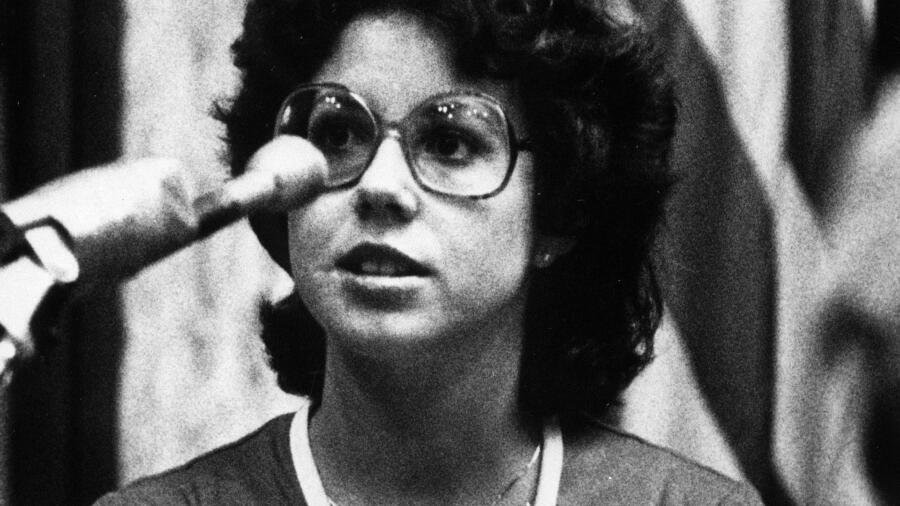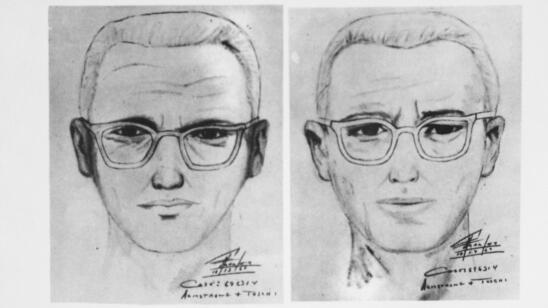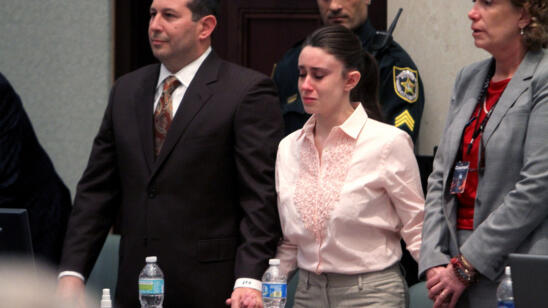After escaping a Colorado jail in December 1977, Ted Bundy fled to Tallahassee, Florida, and went on a murderous rampage. On January 15, 1978, he entered the Chi Omega sorority house on the campus of Florida State University. He stalked the darkened halls, armed with a heavy log he’d found outside the building, violently attacking sleeping coeds. Two of his victims died of their wounds, 21-year-old Margaret Bowman and 20-year-old Lisa Levy. Roommates Karen Chandler, 21, and Kathy Kleiner, 20, were also bludgeoned by Bundy, suffering severe head and jaw injuries, but both survived.
Kathy Kleiner spoke with A&E Real Crime about getting over her mistrust of men, how authorities can help victims and why she doesn’t mind serial killer fandom.
Can you tell me about what the Chi Omega sorority meant to you?
I was the first sorority sister in my family. I wanted to join because I wanted that camaraderie. I was a Chi O for about a year, and there were like 40 sisters. Margaret [Bowman] was beautiful. So Cosmo and beautifully dressed, and I was so frumpy! [laughs] She was someone I could talk to; I could go to her for anything.
[Watch I Survived a Serial Killer in the A&E app.]
What do you remember about the attack?
When Bundy first hit me, it was like [hits table] thud! It wasn’t painful [at first]. And then it became very painful. My jaw was hanging and then the pain was unimaginable. I’m in my bed waiting for another blow and then the light shone in from a car coming in the parking lot. I opened my eyes, and he was kind of spooked, and I was just waiting for it, you know. But he ran out.
I was yelling in my head, help me, help me, where is everybody? And all I was doing was gurgling. I wanted help and people weren’t coming right away. The first on the scene was a police officer, and I felt, even with everything I was going through, I was okay. I knew that guy wouldn’t come back with a police officer there. That gave me peace.
As EMS carried me down from the house, I was on a gurney. I was looking up and all these heads were looking down at me. At this point, I’m really hurting. But when I saw the police lights and the fire truck lights and the ambulance lights and heard people talking, I thought I was at a carnival! In my mind, I was safe and comfortable and having fun.
It’s amazing what your mind can do to protect itself.
Yeah. I’ve told police officers, when they’re first on the scene, if someone says, ‘I’m at a carnival,’ go with it. Play with it, because the victim doesn’t know what they’re feeling in that state of shock. What a comfort it was for me that they showed compassion and were sensitive to me. Cops get such a bad rap, but because they were in the room, in the ambulance, at the ER…. I could see a police officer the whole time [gets choked up], I knew [Bundy] wasn’t coming back, I was safe.
You’ve said you like to consume pop culture about Bundy. Why is that?
The first book I read was [Anne Rule’s] The Stranger Beside Me. I read it because this wasn’t a big ugly monster, this was a person, and I wanted to put a face [on him] and understand. Then I wanted to know more, I wanted to see the movies.
What was it like to see your attack portrayed in a movie?
It’s a memory. Every time I see something like that, I look behind me, because it’s not in front of me, it’s behind me. And that’s healed me.
I get people on Twitter, like, ‘I’m going through a divorce, I’m being knocked down,’ and I’m like, ‘What are you doing? Find your strength, don’t let them rule over you, and get what you want. Be strong and don’t cower. ‘
So because of what happened to you, you’ve been able to turn it around and help other women.
I never saw that as something I would be doing. I just wanted to tell my story. Because it’s just me, and I feel so normal. If I can [get someone] to take those little baby steps to walk away, that’s very important to me. Not just telling my story, but the journey is far more than that.
[A few months after the attack], I [realized] I was afraid of men, so I got a job at a lumberyard in Miami.
Was that an effort to expose yourself to being around men?
Yes, to not be afraid of everything. Because there’s some cute guys out there! And I was healing. I was getting over calling my Chi O sisters—I left messages and no one ever called me back. My mom and sister finally said, ‘They got the messages; if they want to call, they will. But right now, this is destroying you.’ I wanted hugs. I wanted them to tell me, ‘You did nothing wrong; we’ve got your back.’ And then my sister says, ‘I’m your sister.’ And that’s what I needed.
So in 1978, [after] the lumberyard, I went to work at a bank. A guy came up to my teller window with a little bag and he opened it and there was a gun. The typical— give me everything, very quietly, push no buttons. My head teller… called the police. Behind me is the drive-through window. As the police drove through, he sees them behind me and takes off. Then you could hear the police saying, ‘Stop or I’ll shoot,’ [and then gunshots].
This was just months after your attack?
Yeah, six months. The next day, I came back and went to work. First of all, what are the chances? [laughs] I’m not going to get robbed again. Where’s the safest place? This one desk at this one bank.
How frustrating was it that you couldn’t positively identify Bundy?
I wasn’t scared. I felt like I had a bit of power, because he was on the wrong side of the table. The last question the prosecutor asks: ‘Was this the man that attacked you in the room that night?’ I wanted to say, ‘Yes! It was!’ But I’m a goody girl, and I just couldn’t. I said, ‘I can’t tell you. I don’t know.’ But I wanted to put that nail in.
You must’ve been scared that he’d get off, then.
I didn’t know. I remember when I got off the stand and went in the back room, I almost threw up because of all that. But I was strong when I needed to be and just stared him down. The first time I saw him was at the grand jury in Tallahassee. It was surreal because I walked in and there was a long conference table, defense attorneys, prosecuting attorneys, [with] Bundy at the head of the table.
They sat me down and he stared at me. And I looked at him thinking, ‘Who and what are you?’ I felt intimidated, but I didn’t want him to know that. He’s not beating me right now. He’s not in my room. I can handle this. He’s going to get in trouble. And that helped me.
That was the first time I saw him, and then the second time was the trial. He was participating in the defense. He had gone to law school, but he wasn’t planning on being a lawyer. He wanted them to think he was going to be a lawyer; just like everything else, it was what he wanted them to see. He tried so hard to be normal, but it was so easy [for him] to kill.
It was a full decade after your attack that he was executed. Can you talk about what difference the execution made?
For over 10 years when he was incarcerated, they had stays of execution. It pissed me off. I said, ‘Where’s Margaret’s and Lisa’s extensions?’
The night the execution was going to happen, the district attorney called at midnight and said, ‘There’s no more stays, this is going to happen now.’ I got a call at 6 or 6:30 a.m. that it was done, he was killed, before it showed on TV.
I cried. But I wasn’t crying for me. I was okay; it was for Margaret and for Lisa and for 30 other people. Just to have peace for them… [for a] resolution for their families. Afterward, I composed myself. I dried my face and said, ‘Let’s go to breakfast.’ I was over it.
This morning I was standing behind a woman carrying a Ted Bundy tote bag. I’m wondering, how would you feel?
I think it’s cool.
Even the fandom aspect?
Yeah, because they’re interested in it. I guess they are glorifying him, but that’s what he wanted them to see. He was cute—whatever—but he killed people. He was mutilating, cutting heads off, and people need to know that was part of what he was. The victims [are] what’s important.
Related Features:
Learn More About the Serial Killers of ‘Invisible Monsters’
What Was Ted Bundy’s Execution Like?
Ted Bundy’s Childhood: Lonely Boy to Window Peeper to Serial Killer
The 5 Most Bizarre Moments from Ted Bundy’s Murder Trials
Ted Bundy’s Many Faces: How the Serial Killer Was Able to Change His Appearance So Easily


